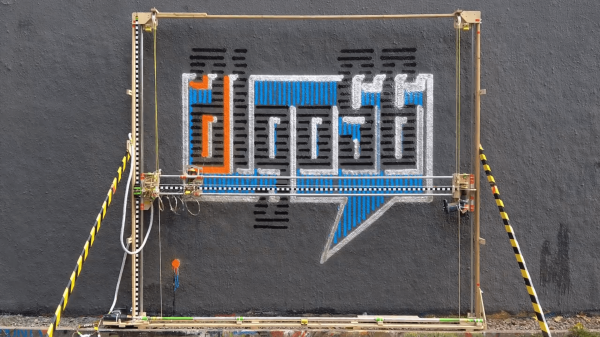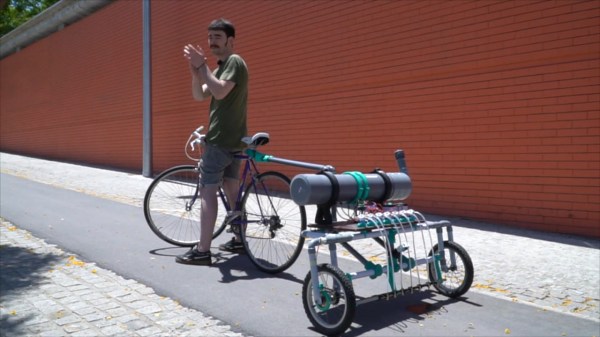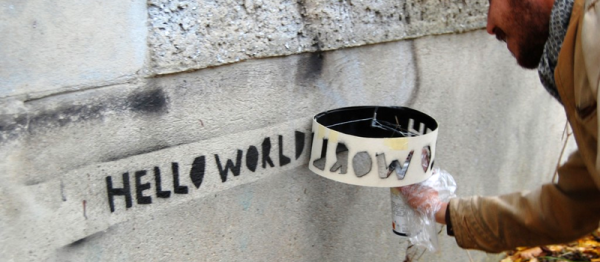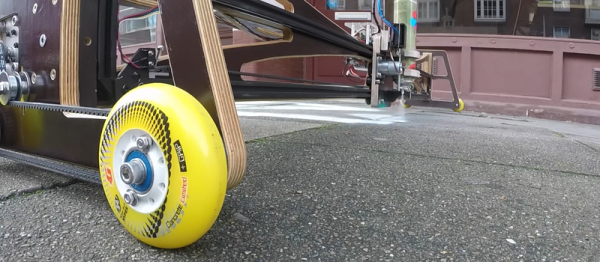In Banksy’s book, Wall and Piece, there is a very interesting quote; “Imagine a city where graffiti wasn’t illegal, a city where everybody could draw whatever they liked…”. This sounds like it would be a very exciting city to live in, except for those of us who do not have an artistic bone in their body. Luckily, [Niklas Roy] has come up with the solution to this problem; the Graffomat, a spray can plotter.
The Graffomat is, in its creator’s own words, a “quick and dirty graffiti plotter.” It is constructed primarily from wood and driven by recycled cordless drills that pulls string pulleys to move the gantry. The Arduino Nano at the heart of the Graffomat can be controlled by sending coordinates over serial. This allows for the connection of an SD card reader to drip-feed the machine, or a computer to enable real-time local or over-the-internet control.
We are especially impressed with how [Niklas] handled positional tracking. The cordless drills were certainly not repeatable like a stepper motor, as to allow for open-loop control. Therefore, the position of the gantry and head needed to be actively tracked. To achieve this, the axes are covered with black and white striped encoder strips, that is then read by a pair of phototransistors as the machine moves along. These can then be paired with the homing switches in the top left corner to determine absolute position.
Graffomat is not the first automated graffiti machine we’ve covered. Read here about the robot that painted murals by climbing smokestacks in Estonia.
Continue reading “Automate Your Graffiti With The Graffomat!”


















